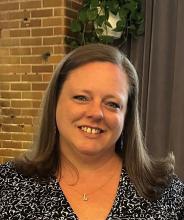When a large rheumatology clinic in Richmond, Virginia, heard that Medicare would be reimbursing patient navigators, they decided to launch their own virtual navigator program.
“We read about it and felt like it was the perfect representation of what we were already trying to do,” said Blake Wehman, founder and CEO of Remission Medical, which offers virtual diagnosis and longitudinal care in rheumatology.
Mr. Wehman has plans to start submitting for these principal illness navigation (PIN) codes in 2025.
The Centers for Medicare & Medicaid Services (CMS) in 2024 began paying navigators who assist Medicare patients with high-risk conditions, which could include rheumatologic diseases. “The codes are not limited to a specific set of diagnoses; rather, the definition of a serious, high-risk condition is dependent on clinical judgment,” the agency clarified.
CMS established this provision in the CY 2024 Physician Fee Schedule final rule.
Reimbursing patient navigators is long overdue, noted Edith Williams, PhD, MS, director of the Center for Community Health and Prevention and founding director of the Office of Health Equity Research at the University of Rochester in New York. “It’s something our patients need. It’s something that the science is telling us can impact outcomes as an adjunct to clinical care,” she said.
Dr. Williams said the new CMS codes “got our departments talking about what this policy is and how it would translate into patient care.”
The codes apply when navigators are assigned to support patients with high-risk conditions who need assistance connecting with clinical and other resources, including any unmet social determinants of health needs, or in diagnosis or treatment of their medical problems.
“Having a navigator by their side to help get through all the clinical and administrative challenges gives people an advocate and a partner who is with them and their families every step of the way to help make the journey easier,” said a CMS spokesperson.
Not all navigator programs may qualify for the new codes. Some are supported by grants and don’t bill patient insurance. However, they all share a common goal: to guide patients through the healthcare continuum and assist with appointments and medication adherence.
Identifying ‘Root Causes’ of Barriers
Navigators represent a wide variety of backgrounds, ranging from healthcare professionals to students or even patients themselves. They generally don’t provide medical advice. “However, we are responsible for making sure our patients and their families are educated and aware, then assist with guidance on their path,” said Katie Costillo, BSW, CPPN, patient navigator and program manager with the Lupus Foundation of America, Heartland Region.
“Training and experience in engaging and building rapport is essential to assisting patients overcome obstacles that limit their access to healthcare,” she said. Narrowing down with patients the root causes of their barriers and then identifying appropriate and available community resources is key.
Studies have demonstrated the effectiveness of adding a navigator to a rheumatology patient’s care plan. In one study, a group of Boston researchers determined that navigators played a useful role in reducing adherence barriers to oral disease-modifying antirheumatic drugs. The navigators uncovered several concerns among 107 rheumatology patients, including fear of adverse events and medication effectiveness.
They also helped to facilitate patient-physician communication, developed strategies to improve medication adherence, and provided medication and diagnosis education. Patients reported satisfaction with the navigator experience.
A study Dr. Williams coauthored that examined behavioral interventions to support African American women with systemic lupus erythematosus found that patient navigator participants had superior coping scores, compared with those engaged in peer-to-peer methodology and patient support groups.
“We had a lot of success with the mentorship program, too,” Dr. Williams said. Navigator services, however, offer more one-on-one attention, “and it’s more tailored to what the person needs rather than the set curriculum that the mentors delivered to their mentees.”




